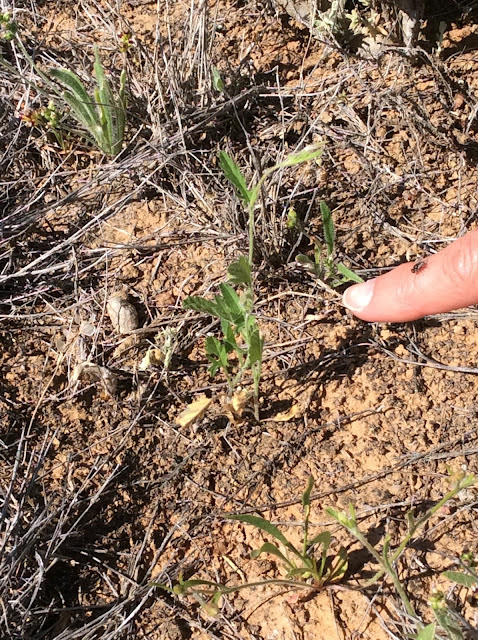What is the process an artist uses to paint her plant? In this series Roslyn Glow will take us through the process that she used for Atriplex stipitata.
She begins by getting to know the plant.
Atriplex stipitata is a modest subject, but I know from experience that, no matter what my initial reaction, by the time I have studied a plant and found out a bit about how it makes its living and the history of its discovery, I will undoubtedly find it fascinating.
 |
| Atriplex stipitata |
I turn the specimen around, and view it from every angle. I try to identify the male and female flowers, but the female flowers are hard to identify. I paste various parts of the plant onto a page, using spirax book covering film.
There is not enough plant material to do a complete series of parts as well as looking at them under the microscope. The fruit is easy to identify. I look under the microscope, and try to dissect what I think is a female flower, but am unable to identify any parts. There is only one little specimen that is clearly female. I choose the more handsome of the specimens with male inflorescences.
That night, in the middle of the night, I use my Ipad to research the plant. As I have no printer with me, I forget most of what I find, but next day I copy the most important identifying features of the plant onto my sketch pad. One interesting thing is that this species can be monoecious or dioechious. Mine appears to be dioecious, that is male and female flowers are on separate plants.
Unfortunately our main reference book, Plants of Western New South Wales (Cunningham et al) does not have a picture of my plant, but it does have a drawing of the fruit. I trace this drawing onto my sketch pad.
I am interested in the fact that my specimen’s leaves are partially closed, while the photos show the leaves as more or less flat. Eventually I discover the reason for this. When the soil is very dry, the leaves close, presumably to help conserve moisture. My specimens were clearly thirsty.
Google finds me plenty of photos of A. stipitata but no paintings, and few drawings. The only comprehensive one is by Margaret Flockton, an important Australian botanical illustrator.
It is possible that an unpublished collection of paintings of the plants of the Broken Hill area held in the National Library in Canberra includes a painting of A. stipitata, but I can’t be certain of this; it requires more research than I can do in Menindee.
By Internet Archive Book Images [No restrictions], via Wikimedia Commons


































